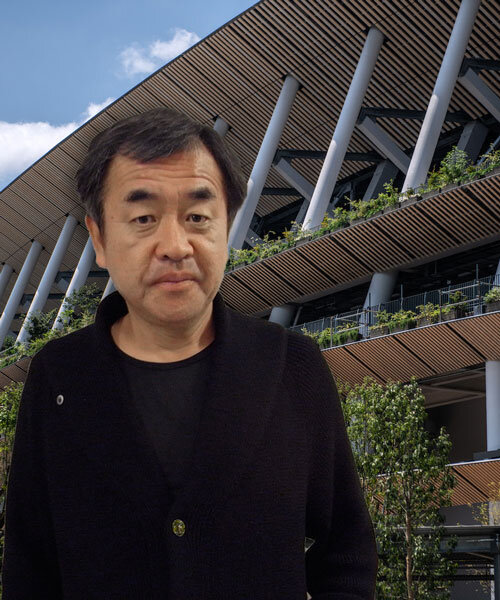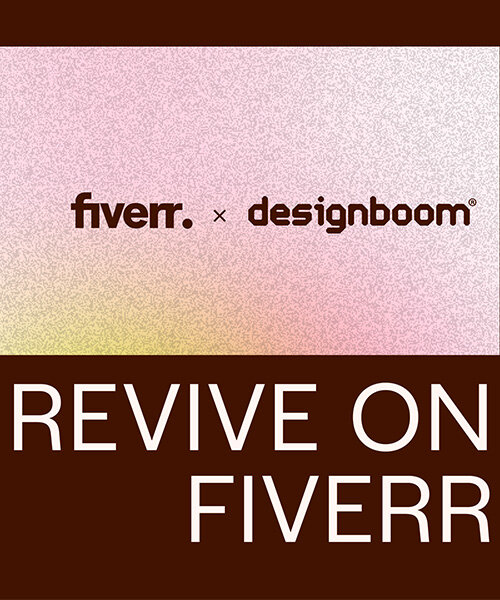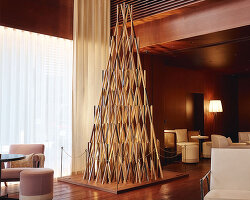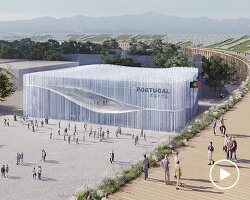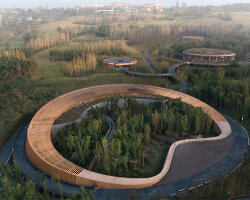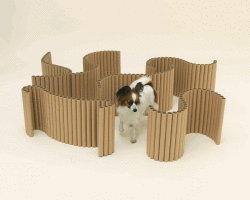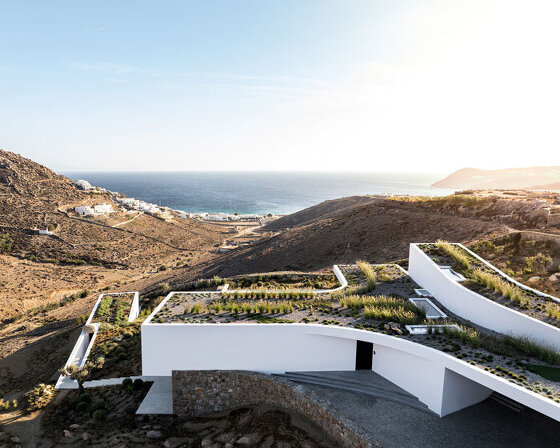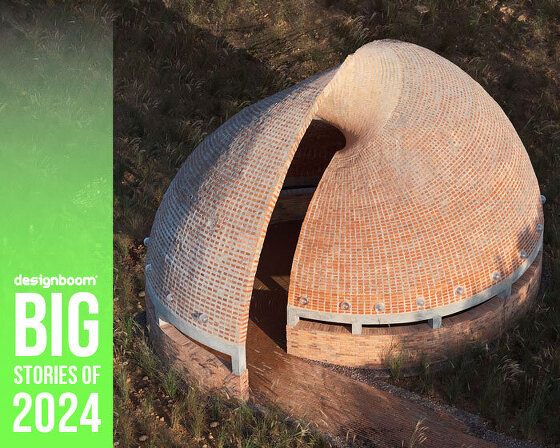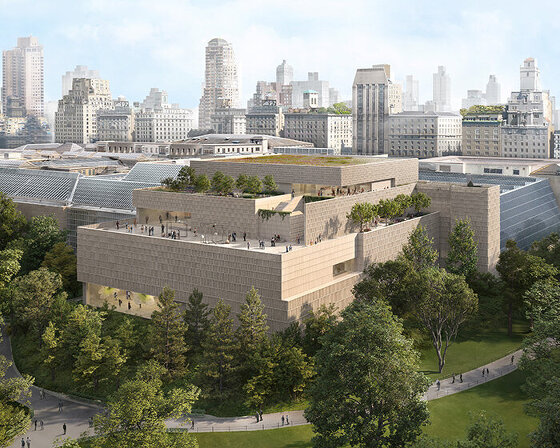kengo kuma honored by time magazine
kengo kuma has just been named one of TIME magazine’s 100 most influential people. the news follows the completion of his national stadium in 2019 ahead of the postponed tokyo 2020 olympics.
celebrating kengo kuma’s national stadium, which was the centerpiece of the olympic games, TIME writes: ‘kengo kuma champions an ideal ‘losing architecture’ — intricate buildings that disappear into their environs — although it’s hard to miss the new national stadium… his stylistic fingerprints can be seen throughout the elaborate project… greenery dots the facade of the oval-shaped structure, the centerpiece of this year’s games, allowing a series of wooden eaves — a favored material for kuma, procured from prefectures across japan — to better blend in with the surrounding garden.‘
the honor also follows a symposium dubbed the earth OS rewriting project at which kengo kuma spoke. the event was held on november 16th, 2020, at the kudan house in tokyo. designboom’s japanese editor shuhei senda assisted at the symposium and documented the round table discussion. now on the occasion of the architect’s honor, we reflect on the thoughtful and timely dialogue.
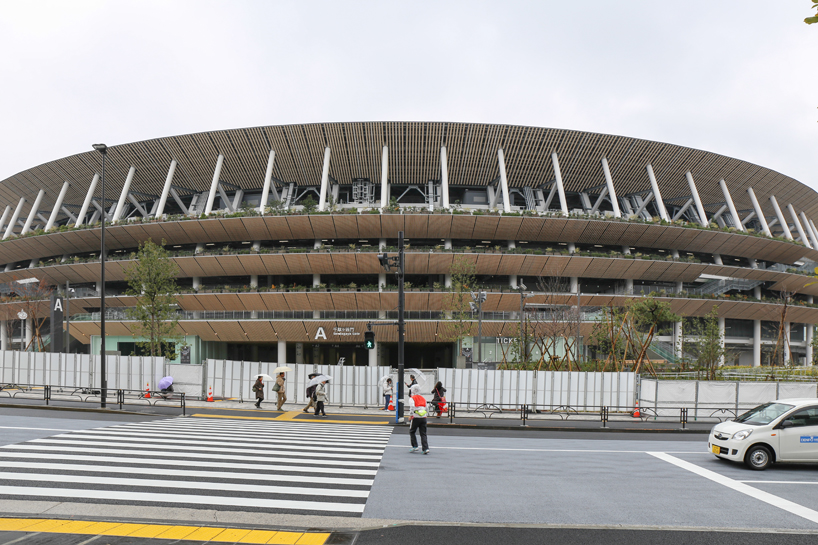
kengo kuma’s olympic stadium for tokyo 2020 | read more
image © designboom
the earth OS rewriting project
at the earth OS rewriting project symposium, kengo kuma reflects on the primitive origins and continual evolution of built space. he notes that as the urban context became increasingly densified, it evolved to become of ‘a world of boxes.’ perhaps, he wonders, this condition should not be the ultimate solution. together with music designer tetsuya komuro, and minoru yoshikawa, president of toho leo co, the architect speculates that the global pandemic may trigger the beginning of a new phase or ‘OS’ in this evolution.
read the conversation below!
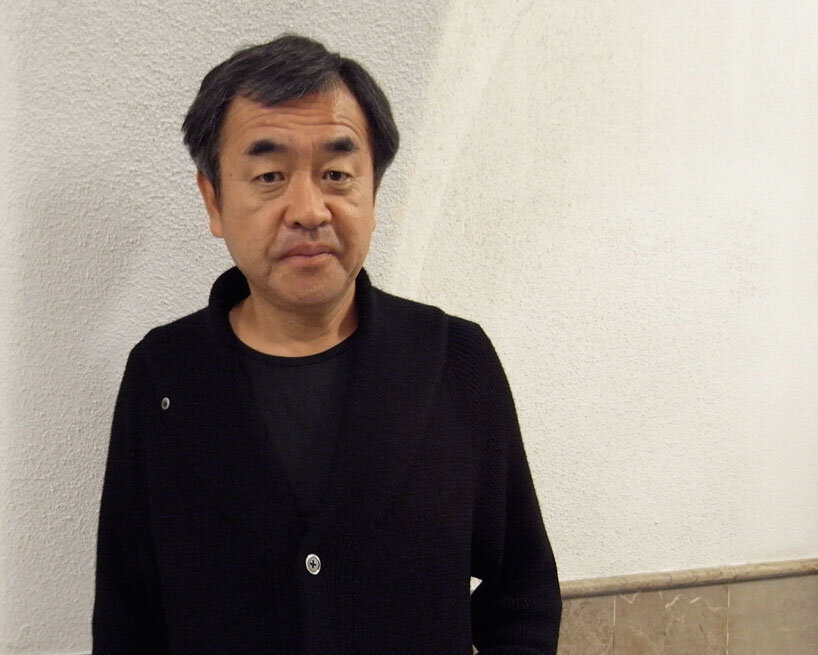
kengo kuma portrait | image © designboom
kengo kuma on the evolving ‘world of boxes’
kengo kuma (KK): I think many people are interested in the architecture of cities after the coronavirus. because I am doing architecture, I feel the end of its OS. architecture is a human being, and the OS called architecture was called to protect the global environment of homo sapiens. if you trace the origin of architecture, human beings started farming, then created an area that is fixed. a frame stood up three-dimensionally and became an architecture. the frame became stronger and stronger, and the place where the frames accumulated became a city.
the problem of urban concentration has arisen, and there is no more land on which to go up… that is what I call the ‘world of boxes.’ was the world of the box an absolute solution? I don’t think that was the only solution for homo sapiens, I think that is the greatest insight we have gained during this coronavirus.
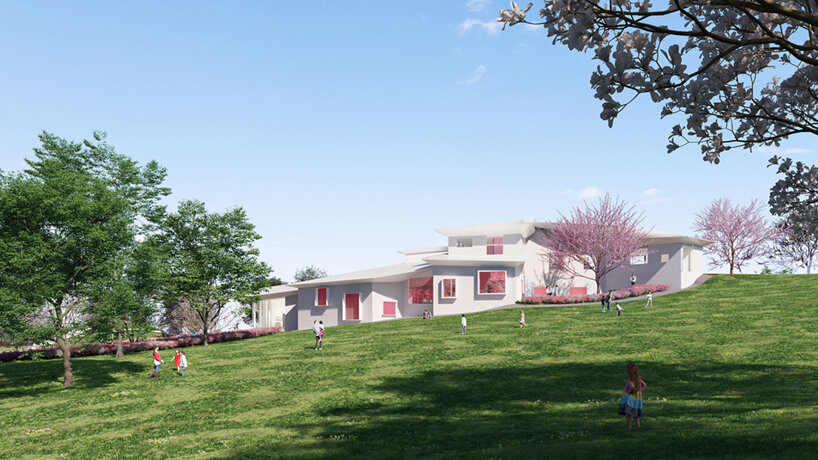
kengo kuma to honor author eiko kadono with children’s literature museum | read more
KK (continued): basically, since the end of the 20th century, various people have been warning about the crisis of the world of this box, the crisis of architecture, and the crisis of the city as a place where architecture is concentrated. regarding global environmental problems, basically going back to the crisis of the box world, people are trapped in the box and the air is forcibly controlled by air conditioning in it. even though it was already common sense at the end of the 20th century that the crisis of the method itself led to environmental problems and global warming problems. humans did not try to get out of the box.
tetsuya komuro (TK): why couldn’t it be done?
KK: the box is a vested interest. boxes are made and rented or sold, and the economy is running around with boxes.
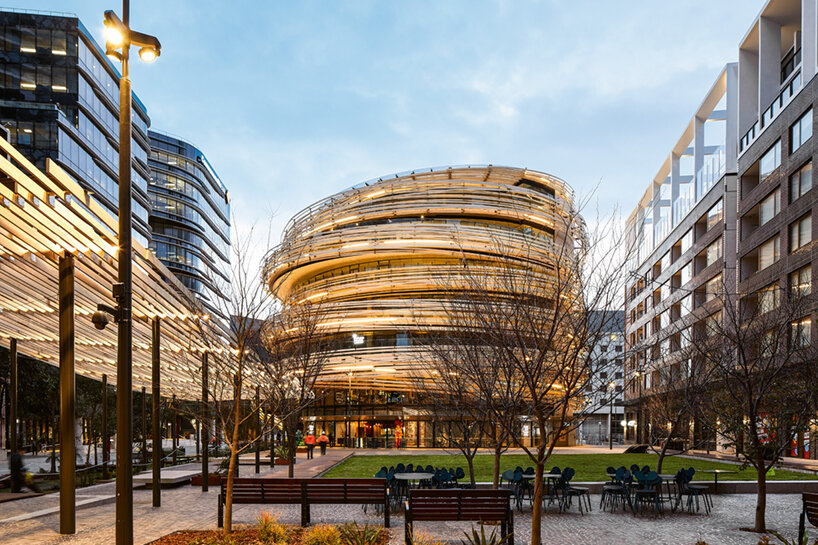 kengo kuma wraps sydney’s ‘the exchange’ with curving timber screen | read more
kengo kuma wraps sydney’s ‘the exchange’ with curving timber screen | read more
minoru yoshikawa (MY): what about the meaning of this original OS and concrete and materials of the theme ‘let’s rewrite the OS of the earth?’
KK: a concrete OS sits on top of the box OS to make the box even stronger. the beginning of the box OS was, for example, the plague in the 14th century and the dirty roads, so the renaissance box-shaped architecture was born to escape the filthy medieval era. with the advent of the style of designing boxes with that mathematics and geometry, it evolved steadily, and in the end it finally got the most suitable materials, iron and concrete, in the 20th century.
the OS of the box has reached a certain degree of perfection. then it starts to rotate in a self-contained manner. people can’t easily escape from it. people who are doing business with vested interests there have no choice but to maintain it. politics can only continue to make boxes or support them… in this way, it became like a kind of self-driving machine.
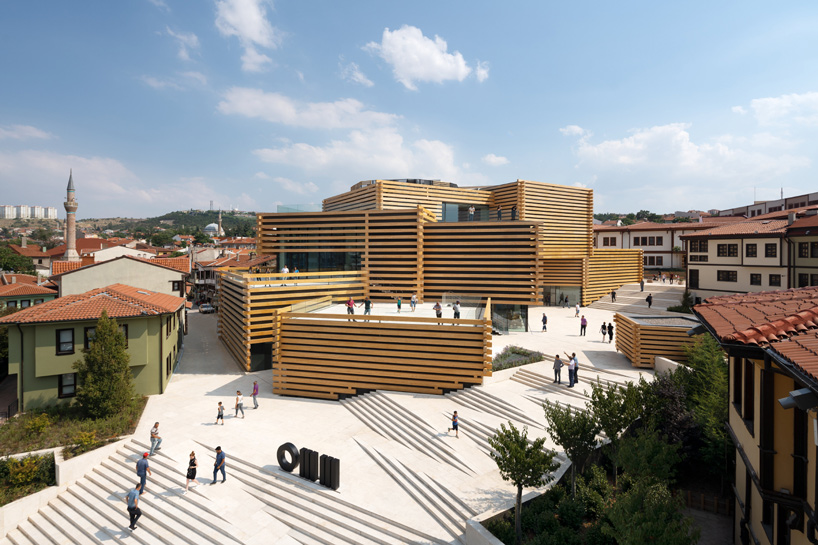
odunpazari modern museum by kengo kuma and associates opens in turkey | read more
TK: is it just an addition to trying to incorporate something natural into the box?
KK: you’re right, it’s just decoration. the only way to survive is to decorate the box with natural materials and greens. it became clear in the second half of the 20th century. when we couldn’t find the answer on how to deviate from that negative cycle, an external factor called the corona forced us to deal with it.
MY: even without corona, was there a clear challenge to creating a new architectural format? has corona turned it into a problem that needs to be solved now?
KK: because everyone faced the problem that they might die, not the abstract story of humanity’s challenges. it will be the first time in the history of mankind that everyone shares that opportunity.
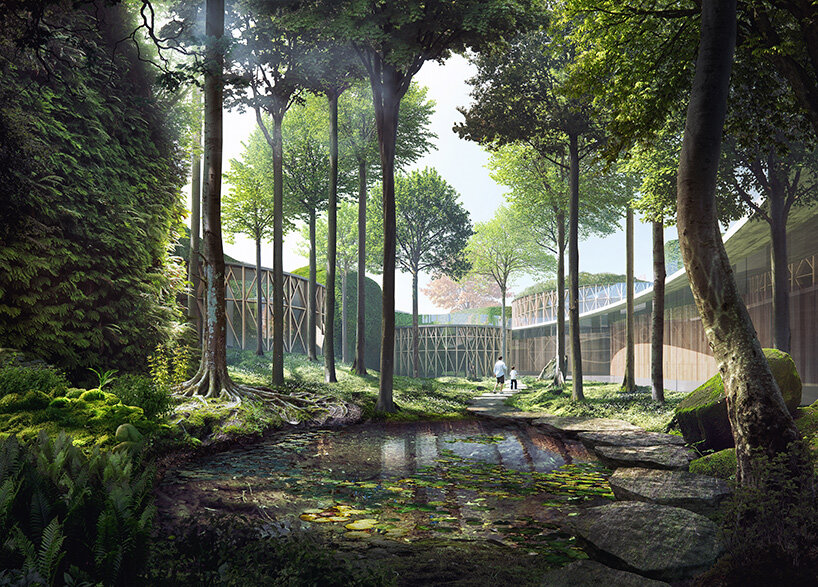
kengo kuma’s hans christian andersen museum set to open in denmark | read more
MY: until now, disasters have occurred only in some areas, so other people could help.
KK: I also worked in areas such as earthquakes and tsunamis, but looking back, I regret that they were basically not my problem.
TK: what is the possibility of future architecture apart from the conventional way of architecture?
KK: the design of time becomes more important than the design of space. in short, how people spend their time. in the conventional world of boxes, we were thinking only about space, so for example, if a box was uncomfortable, we would try sticking wood or greening it. there was no perspective on how to spend time.
the question is how humans will live in the future, that is, how they will spend their time. for example, when it comes to mobility, many people work in cities and live in the suburbs. for commuting, I leave home at a fixed time and return at a fixed time. I am not only trapped in space, but also in time. how do we deviate from this? if you can’t find a solution, you can’t escape from the city.
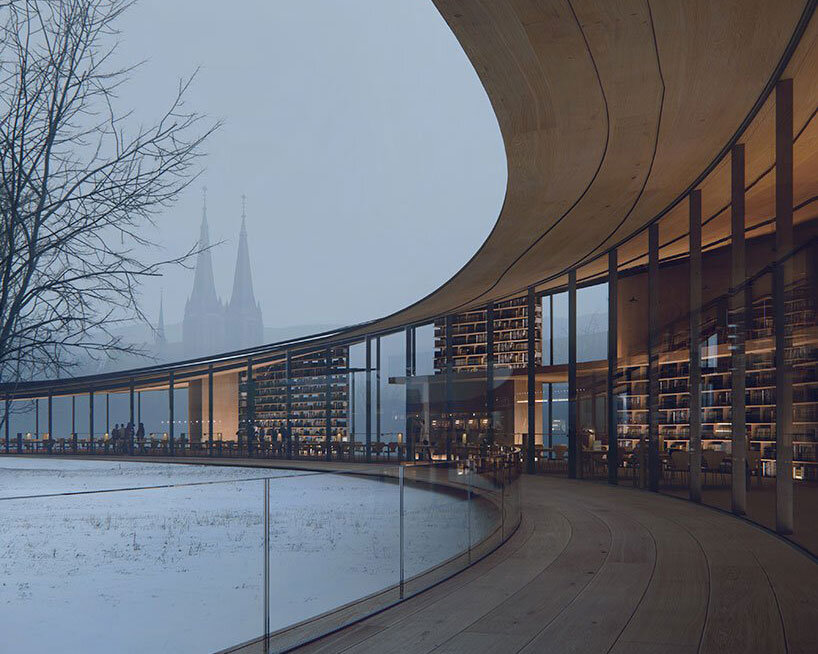
kengo kuma wins first prize for ibsen library proposal in norway | read more
MY: is there any possibility other than time?
KK: I think that the physical senses of human beings are ignored. what do you eat? I think food is important.
MY: why is food important?
KK: traditional foods are generally temporally and spatially constrained, and at a certain time, the food should have been given a quantitative standard such as nutrition and calories. but in reality, food is tied to place. for example, in the life of homo sapiens, where and what to collect was a major motivation for moving. if the capacity of one place is exceeded, move to the next place, or move to the place where you can eat the most delicious food of the season… we hope that the motivation for moving will be an important engine for our system of change of attendance.
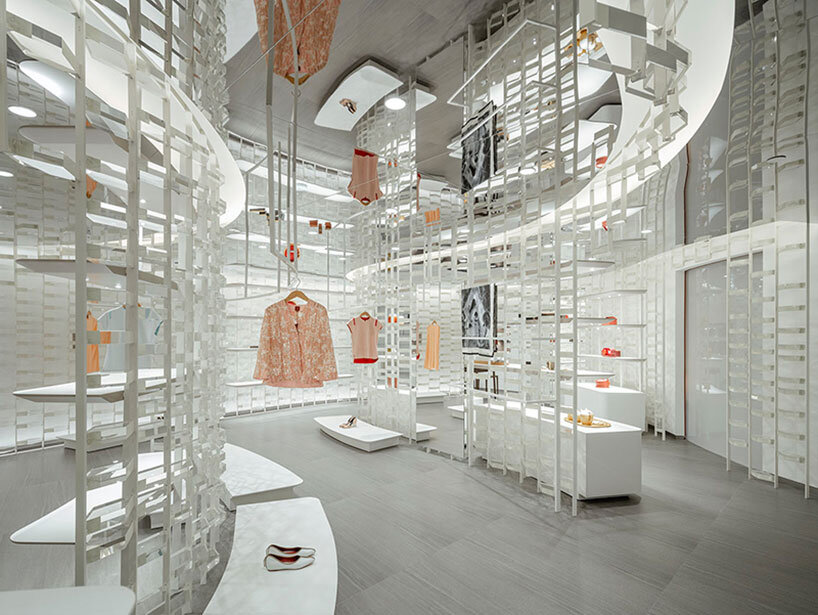
kengo kuma designs its SHANG XIA interior with a constellation of glass bricks | read more
MY: does it mean that human needs and human health are important?
KK: rather than taking supplements or going to the gym after work, for example, exercising on the move can itself incorporate an exercise experience into everyday life for humans.
MY: and concentration?
KK: the existence of the city needs to be redefined as local. broadly speaking, concentration and decentralization have been repeated in history. there is a word ‘city concentration,’ but in japan, for example, there was an era of decentralization after the capital was established in nara, and there was also an era of japan as a local collective.
nobunaga hideyoshi’s era was concentrated, but then in the edo era there was another era of dispersal, such as a change of attendance. we are repeating concentration and dispersion. and it can be said that japan is climateally suitable for dispersion. the complexity and diversity of the terrain makes it easy to create local aggregates.
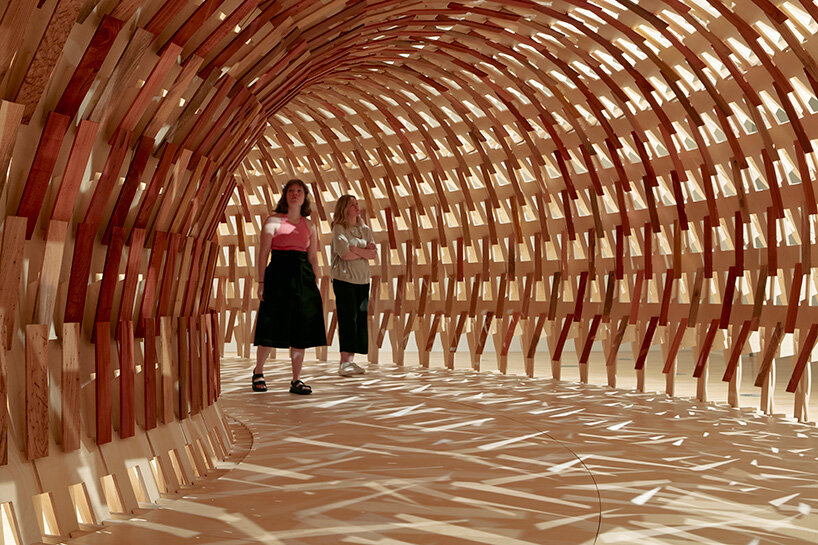
kengo kuma and geoff nees build ‘botanical pavilion’ at NGV triennial 2020 | read more
MY: is it still an issue today that concentration has continued since the meiji era?
KK: it is said that during the edo period, it had a distributed structure like a collection of more than 800 villages. it seems that it can be applied to today’s tokyo.
TK: is it what people want to be able to work, live and play anywhere? the standard is not to work in one place.
KK: the design office has a job called site management. until now, a staff used to go to the site in toyama once a week and return to tokyo each time. that seemed very nonsense. there was a lockdown in corona, so the staff who went to toyama don’t have to come back to tokyo. I said he could live in toyama. someone else in okinawa. in this way, the office staff will become satellites. this can be done without any problem if it is technical. he may go to hokkaido after okinawa. however, if you call it ‘remote work,’ the fun will be lost.
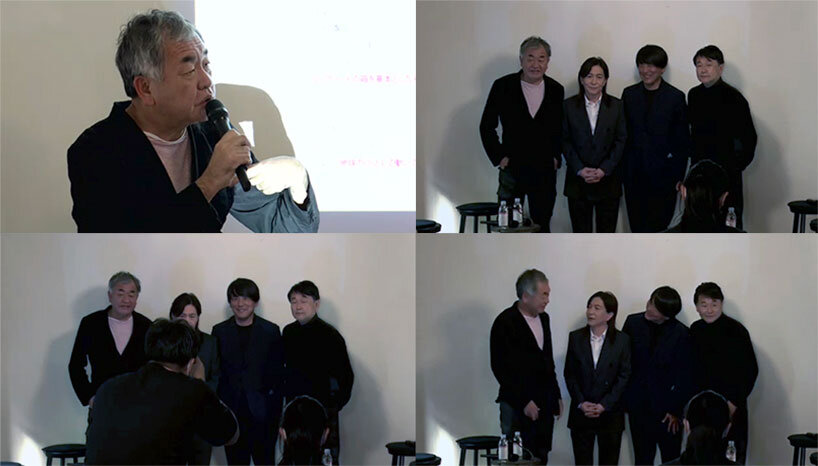
images © designboom
MY: the secret to balancing online interaction with actual meeting and interaction?
KK: it is important to be able to create your own network first. the most important thing is to connect the people who had doubts about the world of boxes until now. that motive was born in corona. if you waving a flag and gathering people with such a motive, you will notice that an unexpected person was interested. people outside of architecture are looking for a kind of community to replace architecture, something to unite.
mr. komuro also participated in a project by a canadian developer, and there was talk of mr. komuro adding sound to the space he designed. companies like yamaha, who are also interested in creating a sound space that is not a visual space, were also interested in mr. komuro’s thoughts. it is important to be able to bundle such things.
looking at the traditional japanese architectural space, they seemed to dislike the boxy space. there was a strong desire to make eaves and get out of the box. it goes from centralization to discreteness. I think it’s a factor edge in this corona, like a half box in japanese culture.
earlier this summer, designboom interviewed kengo kuma following the publication of his monograph kuma. complete works 1988–today. find it here.
